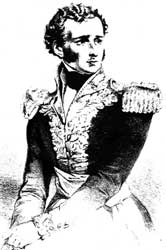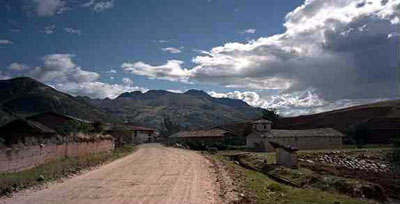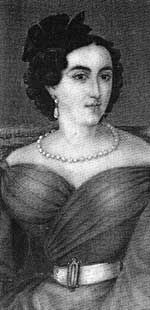
|
St. Patrick's Day in Peru, 1824 By Brian McGinn |
|||||||
|
Page 2 |
|||||||
|
|
|||||||
|
The tension was palpable. Sandes was not only outranked, but was very much an outsider in this Hispanic affair of the heart. Should he risk the wrath of his superior officer, and perhaps his career, for love?
Before he had time to decide, Sucre broke the silence with an audacious proposal. 'Permit me to suggest', said the general, 'that we trust our destinies to luck. Let's toss a coin to see who will win the hand of the marchioness.' Recovering quickly, Sandes agreed. 'Who knows,' said the Kerryman, 'if either of us will ever return to Quito, or whether we will die in some distant battle?' O'Connor, chosen as umpire, pulled a silver peso from his pocket and tossed it in the air. 'Heads' shouted Sucre, as the tumbling coin glittered in the firelight. When the peso fell flat on the floor, Sandes and Sucre looked down at the head of King Carlos IV. Sucre had won. [19]
The Kerryman apparently accepted the result with soldierly stoicism, and kept his feelings to himself. To lighten the loss, O'Connor now pulled from his baggage the two bottles of Irish whiskey that he had carefully preserved to celebrate St. Patrick's Day. 'With the help of these,' wrote O'Connor, 'Sucre, Sandes, Ferguson and myself had an excellent drinking session that night.' [20]
O'Connor was the only one of those drinking companions to survive into old age, dying on his farm at Tarija, Bolivia in 1871, aged eighty-one. [21] His descendants in Bolivia continued the family tradition of tinkering with their genealogy. Only one child of his 1827 marriage to Francisca Ruyloba -their daughter Hercilia- survived. [22] If traditional Hispanic naming traditions had been followed, the O'Connor surname should have disappeared within two generations. Hercilia's son Tomás, from her marriage to Adhemar d'Arlach [23], decided not only to retain his matronymic but converted it into a patronymic, thus becoming O'Connor d'Arlach, a composite surname that has endured in the family down to the present. [24] William Owens Ferguson lived to see the war's end, reaching the rank of Colonel, only to die in September 1828 during a plot against Simon Bolívar. Ferguson, whose physique was said to closely resemble that of the Liberator, was apparently mistaken for Bolívar and shot in the back as he crossed a darkened plaza in Bogotá, Colombia. [25] With honours rarely accorded to a Protestant, the people of Colombia buried the 28-year old Ulsterman in Bogotá's Catholic cathedral. [26] Sucre also survived to see South America liberated, and to keep his promise to the father of Mariana Carcelén. But the hero's marriage was destined to be unhappy and short. It was not until September 1828, four years after the fateful coin toss, that Sucre was united in marriage with Mariana. [27] In 1830, at the age of thirty-five, he was assassinated by political rivals while riding home from Colombia to Quito. Sucre had spent only eleven months in his wife's company. [28]
|
|||||||
| Last Update: January 2005 | |||||||
| Please contact us if you have a question or wish to suggest changes |
|


